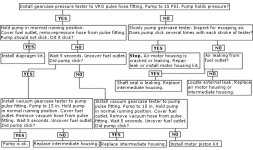No RTV should be used in the fuel system components at all.....NEVER.
The pulse limiter passes air both ways.
If you have low crankcase compression in #4 crankcase, you will have weak Pulses that drive the VRO.
Are you sure that when running you do not have gasoline rain droplets coming out of #4? If so, the reed may be leaking,
causing the low crankcase compression.
I am NOT saying that this is your problem, but that it can contribute to low crankcase pulses.
The pulse limiter passes air both ways.
If you have low crankcase compression in #4 crankcase, you will have weak Pulses that drive the VRO.
Are you sure that when running you do not have gasoline rain droplets coming out of #4? If so, the reed may be leaking,
causing the low crankcase compression.
I am NOT saying that this is your problem, but that it can contribute to low crankcase pulses.


